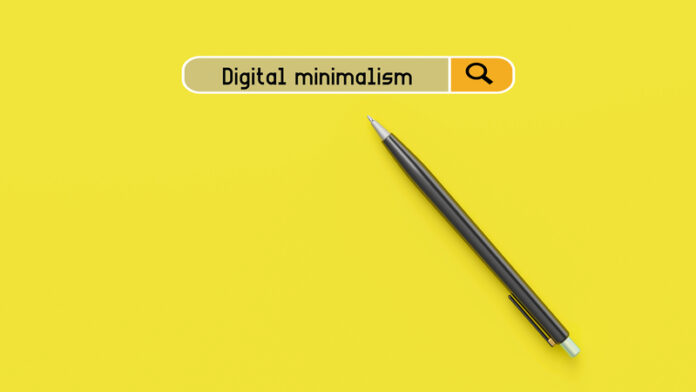
There is a strange thing that happens when a brand has been online for a long time. The voice that once felt sharp and confident begins to blur. Posts mix old campaigns with half-finished thoughts, quick reactions, and one-time experiments that made sense in their moment. Then one day, someone scrolling the company’s Twitter page notices the clutter. It is not bad content. It is simply too much of it.
That is the moment digital minimalism stops being a lifestyle buzzword and becomes a strategy. For marketers, a clean feed is not about silence. It is about consistency, presence, and space for meaning. The idea is simple: clear away what no longer reflects who the brand is. If you ever wondered how to delete tweets from archive in a way that feels purposeful rather than panicked, that is where the art of digital minimalism begins.
The Noise Problem
Marketers love growth. More posts, more impressions, more engagement. But growth can turn noisy. What was once a creative archive can become a pile of mixed messages. One tweet says playfully, another apologizes, another promotes a sale that expired years ago. The result is confusion for the audience and for the people behind the account.
The strange part is that this noise rarely announces itself. It hides behind good intentions. Every post seemed right at the time. Together, they blur the tone of the brand’s voice. And when the voice loses clarity, even brilliant campaigns start sounding tired.
A few marketing teams have started to realize this. They treat their feed as they would treat a store window. Every few months they rearrange, clean, remove, and rediscover what deserves attention. The result is rarely fewer posts, but always better ones.
A communications manager once described it to me during an interview. “We realized our audience was reading us through layers of old context,” she said. “We weren’t inconsistent – we were buried.” That single sentence explains why minimalism matters in digital marketing more than ever.
The Power of Subtraction
There is an old truth in branding: clarity beats cleverness. Yet the temptation to add more never goes away. More features, more messages, more formats. Few people talk about the value of less.
Subtraction creates focus. It also builds trust. When a brand speaks in a steady tone, audiences feel safe listening. They know what to expect. Removing old tweets and campaigns is not an act of denial. It is an act of curation. You decide which ideas still represent you and which belong to another chapter.
One brand strategist I met in New York said she makes every intern spend a day reading through old social posts before starting new work. “It’s not punishment,” she said with a smile. “It’s clarity training. They see what we used to sound like and why we changed.” The exercise always ends with someone quietly deleting a few posts and feeling lighter afterward.
This process can be slow, but it teaches something deeper. Brands, like people, grow into new identities. Letting go of old material is not hiding history. It is acknowledging evolution.
Sometimes marketers fear that deleting content looks like weakness. In reality, it signals self-awareness. It says, “We know who we are now.” In a market flooded with noise, that confidence is rare and magnetic.
The Human Side of Cleaning
Behind every company account are people. They scroll, they hesitate, they wonder if anyone will notice that tweet from 2016. Sometimes they laugh about it in meetings. Sometimes they worry. Digital clutter can make even the best teams feel unfocused.
Cleaning a feed can turn into an unexpected emotional exercise. There is nostalgia involved. You find campaigns that remind you of colleagues who moved on, ideas that never launched, seasons that changed everything. It feels personal because it is.
But that is what makes digital minimalism powerful. When the people behind a brand reconnect with its clearer brand voice, communication becomes honest again. Marketing stops being a stream of noise and turns into conversation.
A social media director once told me something that stuck. “Every time we clean up, we argue less about tone,” she said. “We know what we sound like.” There is freedom in that simplicity. The more coherent the feed, the easier it becomes to stay creative.
A Tool That Makes Space for Meaning
Of course, cleaning a feed manually can be endless. Large brands post thousands of times a year. Even small businesses accumulate clutter before they notice. That is when technology becomes a quiet partner in strategy.
Tools like Tweet Delete help teams automate the repetitive part of this process. Instead of scrolling through years of posts, they can set filters, delete older tweets, and refresh the brand’s tone with a few thoughtful steps. It is not about erasing the past; It’s about creating a clear presence to achieve a clearer brand voice.
One marketing agency shared that they now use Tweet Delete after every major rebrand. It saves them days of work and lets them focus on writing new content instead of worrying about what to hide. The change is subtle but powerful. Suddenly, their feed reads like one continuous message instead of a collage of different decades.
There is also a mental effect. Marketers describe it as calm. When the noise is gone, creative energy returns. Meetings move faster. Strategy feels simpler. The team starts to enjoy the platform again.
That is what digital minimalism really is alignment. Removing clutter makes room for intention. Tweet Delete happens to make that process smooth, but the insight goes deeper than software. It reminds everyone that less can still say more, and that the clearer brand voices often start with listening to the quiet between the posts.
Find a Home-Based Business to Start-Up >>> Hundreds of Business Listings.















































